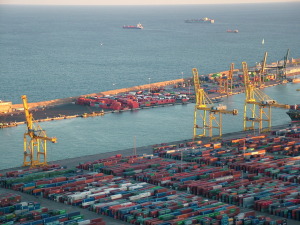What Trade Facilitation Is and Why It Matters
 The majority of people have heard the old saying: “the early bird gets the worm.” Well, the same holds true for trade facilitation – and there are a few good reasons why.
The majority of people have heard the old saying: “the early bird gets the worm.” Well, the same holds true for trade facilitation – and there are a few good reasons why.
Trade facilitation creates a more efficient supply chain connectivity for improved international trading, builds economic and port infrastructure as well as interconnecting region suppliers in a more fluid and cost-friendly way.
But first, let’s back up a bit and give some history. . .
The World Trade Organization (WTO) finalized a Trade Facilitation Agreement in Bali on December 7, 2013. This groundbreaking, record setting deal was agreed upon after years of debate, and showed the world that the WTO’s latest round of talks could actually produce results.
The World Bank describes the Agreement as building on the General Agreement on Tariffs and Trade (GATT) with measures to “provide faster and more efficient customs and border management procedures.” In the foreword of the World Bank report, the Bank acknowledges that “[t]he imperative of facilitating trade through more transparent and consistent border clearance is now universally recognized – and set in stone in December 2013’s World Trade Organization Agreement on Trade Facilitation in Bali, Indonesia.”
So, what is trade facilitation? The WTO itself defines it as “the simplification and harmonization of international trade procedures” covering the “activities, practices and formalities involved in collecting, presenting, communicating and processing data required for the movement of goods in international trade.” The World Bank states that “[b]roadly defined, these measures include anything from institutional and regulatory reform to customs and port efficiency”.
Why is trade facilitation so important to global economic health? Because it could boost global trade by as much as $1 trillion and global GDP by nearly 5%. In February 2014, the Organization of Economic Cooperation and Development (OECD) reported a potential impact in trade cost reductions ranging from 11.7% to as much as 15.1%.
But the true test of the Agreement lies in its implementation. U.S. Trade Representative Michael Froman, at the APEC opening plenary session on May 17, 2014, acknowledged that implementation will test the credibility of both individual Members and of the WTO as an institution.
Now implementation is being threatened and the WTO is being challenged. The African Group and some developing countries are taking the position that the Agreement cannot enter into force until the conclusion of the worldwide talks. This is dangerous and short sighted as the Agreement benefits these countries the most. Hopefully, reasonable and persuasive advocates will make the case that the Agreement is not a concession but rather an important and fully-funded way to improve trade and investment environments.
Emerging economies stand to gain the most by eliminating the red tape, bottlenecks and corruption at their borders. According to the World Bank, “[t]rade facilitation fosters logistics performance, and better logistics spurs growth, competitiveness, and investment. Customs and border management or the improvements of transit regimes are a few areas where trade facilitation can improve logistics”.
As Ambassador Froman pointed out to potential donors at the IMF/World Bank spring meetings, “the early movers will gain the earliest benefits of implementation.” Hopefully, these two groups of countries will see the light.
This article originally appeared on the US Chamber of Commerce website.
